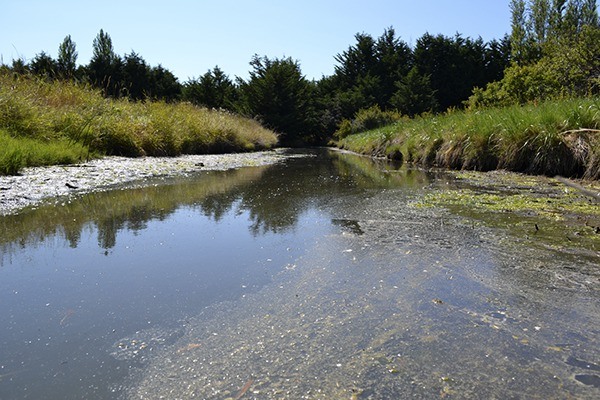No immediate answers are available as to where pollution is coming from in the Golden Sands Slough area near Three Crabs Road in Dungeness.
For the past three months, Streamkeepers of Clallam County has performed trend monitoring of streams as part of the Pollution Identification and Correction (PIC) Plan’s pilot project to find and correct non-point pollution.
Andy Brastad, Clallam County Health and Human Services Environmental Health director, said “They haven’t found the smoking gun yet.
“There’s high bacteria in the water but nothing conclusive,” he said. “It’s detective work now and comes down to homeowners cooperating.”
Since holding a stakeholders meeting last December, Brastad said five homeowners have given permission for water testing on their property to see if a septic tank is failing.
Another informational meeting was held on Aug. 12 and Brastad plans to hold another in the near future while establishing an e-mail list and website so stakeholders can see the latest data.
The idea to investigate Golden Sands followed a resident’s complaint about a bad smell and a sight that seemed reminiscent of sewage, said Brastad.
Nearby, Cline Spit beach was closed last week after health officials found high amounts of fecal contamination in the water. If touched or ingested, the water can cause gastroenteritis, skin rashes, upper respiratory infections and other illnesses.
“People have a right to know,” Brastad said. “It’s a public health risk anytime you have effluent going anywhere. There’s a risk of exposure to humans and secondly shellfish beds becoming infected as water runs down.”
Brastad said the contaminate at Golden Sands and Cline Spit Beach are unrelated.
Golden Sands Slough, Meadowbrook Creek, Meadowbrook Slough and Cooper Creek, all freshwater tributaries, have a history of bacterial pollution dating to the early 1990s, officials with Clallam County Conservation District report.
Jennifer Bond, conservation planner for the Clallam Conservation District, said there is possible help for an affected homeowner.
If health officials identify the home with a a faulty septic tank, then homeowners can be referred to the conservation district for possible financial support from a new grant that assists with septic tank repair.
Typically, the conservation district provides technical and financial support to farmers and livestock owners to prevent muddy run-off by installing waste structures and preventing muddy run-offs, Bond said.
However, she said there aren’t a lot of farming/agricultural areas in the lower Dungeness aside from Nash’s Organic Produce, so the problem in Golden Sands Slough “is likely domestic sources.”
But future projects via the pollution plan may identify more agricultural sites that could call for more assistance from the conservation district, she said.
Before the summer ends, a portion of the pollution plan includes conducting a shoreline survey but some of that is dependent on homeowners’ consent since properties stretch to the tidelands, Brastad said.
Activities with the remainder of the pollution plan will be timed with rains as bacterial pollution shows up more in the winter because the ground is saturated and it’s when marine water quality is most impacted, Bond said.
Partnering agencies finished the Pollution Identification and Correction Plan in 2014 after 18 months of development. For more information, see www.clallamcd.org/pic.


